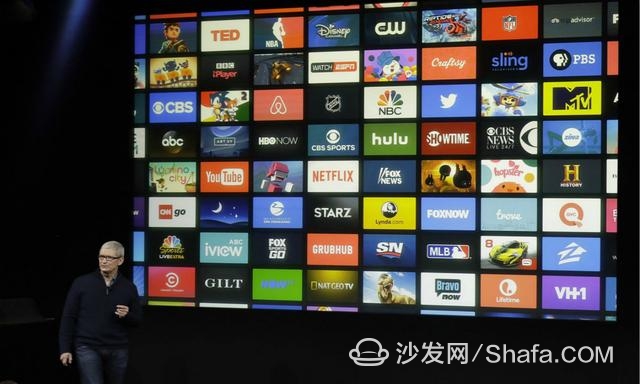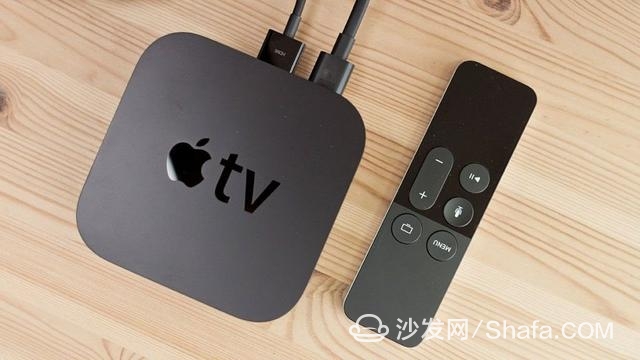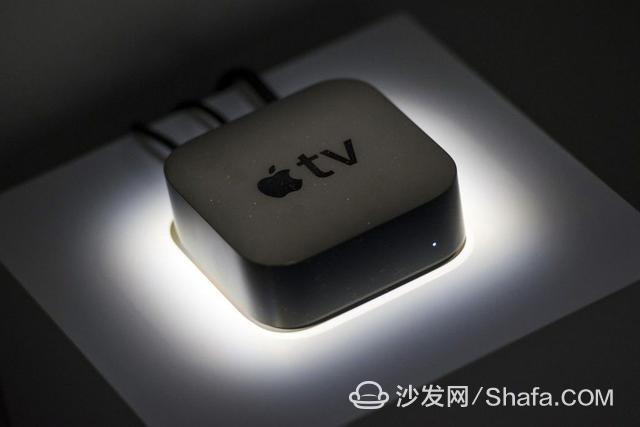
Earlier this month, Apple spun off the chief of the Amazon Fire TV department to manage its TV department. Timothy D. Twerdhal brought a wealth of hardware technology and content experience to the new job, and his appointment showed Apple's renewed focus on TV set-top boxes.
The company is testing a new fifth-generation Apple TV when Twerdhal arrives. This product is expected to be launched as soon as this year. According to people familiar with the situation, the project’s internal codename is “J105â€, and the new set-top box can play 4K ultra-high-definition streaming media with richer colors.
As consumers increasingly upgrade to 4K TV devices, these features may promote Apple TV sales, but to be a breakthrough product like the iPhone, these features alone are not enough. Again, sources said that Apple's engineers had to compromise on Apple's desire to subvert the traditional living room.
Previously, Apple TV tried to replace the cumbersome set-top boxes and streaming TVs launched by cable companies, but it has never succeeded. The team also tried to tie the game console to Apple TV to better compete with Microsoft's Xbox and Sony's PlayStation, and never succeeded. Initially it was planned to allow users to voice control Apple TV on the couch, but in the end they could only speak to the remote control.

Although Apple has never announced Apple TV sales, Lucma Maestri, the company’s chief financial officer, acknowledged in a recent interview that Apple TV sales fell from the 2015 Christmas season to the 2016 Christmas season. Research firm eMarketer said that since the fall of 2015, sales of fourth-generation Apple TV have steadily declined; in January, only 11.9% of connected TV users were still using Apple TV, down from 12.5% ​​last September. This to some extent reflects the competitive pressures from Amazon and Roku. The latter two set-top boxes not only have the same or even more features, but are also much cheaper in price.
Although Apple TV itself is not very important to Apple's bottom line, it is critical for the company's service business because consumers are increasingly spending entertainment in the living room. In last year’s financial report, Apple’s service business revenue reached more than US$25 billion and became the second-largest revenue category after the iPhone.
Apple TV's development can be described as a progressive textbook. Jobs previewed the first generation of set-top boxes in 2006 when the device was only used to stream iTunes videos from Mac to TV. The second-generation device was launched in the fall of 2010, allowing users to broadcast web content on television. The latest set-top box went on sale in September 2015 and was a few months later than originally planned. The latest Apple TV is considered by the majority of consumers and product testers to be a major improvement in the Apple TV series, with an App Store, voice control, and a glass remote control, as well as mobile control games.
But the price of this Apple TV is as high as $149, more than double the price of the previous generation, $60 more than Amazon's Fire TV, and even $20 more than the most expensive Roku. Worse, the viewing experience has not improved. Apple TV users still have to purchase TV dramas separately from iTunes and pay extra for other services.

As a result, a new TV application became the main interaction point for acquiring live programs and sports programs. However, when the application finally went live in December, it was nothing more than allowing viewers to purchase programs from the iTunes video library and the iTunes store. However, these features already existed on Apple TV. The only key new element is the Now Watch interface, which is similar in style to Netflix, and is used to save favorite movies and programs while recommending new content. Some Apple engineers are now a little regretful that they did not design the open interface of the application as a form of user preference customization. However, this idea has not been included in the engineering design plan originally, and adding this function now will consume a lot of resources.
If Apple TV fails to replace the existing cable box, Apple also has a second alternative – the “Minimalist Package†that was once widely promoted – a shortened version of the web service, where users can choose their own channel without having to watch it. Pay for the channel. Apple originally planned to pack four major broadcast networks and some cable television channels, as well as on-demand TV programs and movies, and sell them for $30-40 a month. Considering the rise of online video services such as Netflix and more and more people opting to stop paying for cable TV, media companies are mostly willing to cooperate with Apple.
However, the two sides failed to reach agreement on the cost, content package composition and negotiation strategy. The media company believes that Apple is too arrogant; Apple accuses media companies of lacking flexibility. Finally, cooperation died. Apple's hardware team also had to cancel the coaxial cable interface designed for this purpose.
In addition, Apple TV's software is not as ambitious as it was originally envisioned. The features of the current model are similar to the iPhone-style application grid, but the interactive interface that designers originally designed is actually much more innovative. For example, one idea that is internally called "Intentions" is to place four labels in the center of the screen: three main content types (video, music, and games) for Apple TV, and the other is an arbitrary match. Another idea is to allow the user to hover over each icon to preview its content (this feature is still expected to remain at the top of the application design).
To a certain extent, the development and design of Apple TV has come to grips with the company’s obsession with high profits. Apple has always been very sensitive to product losses - even if it can make up for this loss through sales content. Some engineers initially hoped that the set-top box could support 4K video. However, 4K ultra-high-definition graphics require higher-speed processors, which means that the manufacturing cost will also increase significantly. This means that Apple will have to lower profit expectations or make the pricing higher than the market. Withstanding range. In the end, Apple decided to adopt the cheap chip launched in 2014, 4K, of course. In the same way, some of the factors that do not bind the game console also lie in controlling costs.
The arrival of former Amazon Fire TV director Twerdhal may have freed his predecessor, Pete Distad, to allow Distad to try and implement more content transactions and even revive the "Minimalist Package" project. Distad joined Apple in 2013 and previously served as vice president of content distribution at Hulu. Twerdhal worked at Netflix and Roku before joining Amazon. Munster said: "The fact that Apple has dug into the wall indicates that Apple hopes to improve. I think they have realized that the current development is off track. If the company can't solve the problem of Apple TV, then Apple will be in the "living room battle". Lost."
Smart TV/box information can focus on smart TV information network sofa butler (http://), China's influential TV box and smart TV website, providing information, communication, TV boxes, smart TVs, smart TV software, etc. Answering questions.
Kindwin Technology (H.K.) Limited , https://www.ktl-led.com